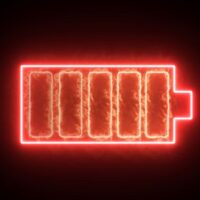Understanding Liability in Golf Cart Fires: Lessons from a Brevard County Incident

A recent incident in Brevard County, Florida, serves as a stark reminder of the potential dangers associated with golf cart chargers. A fire broke out in a home after a golf cart charger was plugged in, causing significant damage to the property and minor injuries to one person. As investigators work to determine the exact cause, this situation raises important questions about liability in such cases.
The Incident: What Happened?
On a recent Friday, a fire erupted in the 700 block of Hyacinth Circle in Barefoot Bay, near Sebastian, Florida. The Brevard County Fire Rescue responded quickly to the scene, where they found that the fire had been sparked after plugging in a golf cart charger. The blaze caused serious damage to one home and minor damage to a neighboring property. Fortunately, only one person sustained minor burns, and no fatalities were reported.
Neighbors expressed their relief that the damage was not more extensive and praised the fire department’s prompt response. However, the incident has left many in the community concerned about the safety of golf cart chargers and the potential risks they pose.
Who is Liable When a Golf Cart Charger Causes a Fire?
When a golf cart charger causes a fire, determining liability can be complex and involves several potential parties, including the manufacturer, the property owner, and possibly the installer. Here’s a breakdown of how liability might be determined:
Manufacturer Liability
If the fire was caused by a defect in the golf cart charger, such as faulty wiring or poor design, the manufacturer of the charger could be held liable under product liability law. This type of liability applies when a product is defective and causes harm, and it can be based on:
- Design Defects: If the charger was designed in a way that made it inherently dangerous, the manufacturer could be held responsible.
- Manufacturing Defects: If the charger was improperly manufactured, leading to a defect that caused the fire, the manufacturer could be liable.
- Failure to Warn: If the manufacturer failed to provide adequate warnings or instructions on the safe use of the charger, they could also be held accountable.
In product liability cases, the injured party must prove that the product was defective and that this defect directly caused the fire and resulting injuries or damages.
Property Owner Liability
The property owner may also bear some responsibility if the fire resulted from negligence in maintaining or operating the golf cart charger. For example:
- Improper Use: If the owner used the charger in a manner inconsistent with the manufacturer’s instructions or in an unsafe environment (e.g., near flammable materials), they could be partially liable for the damages.
- Maintenance Negligence: If the owner failed to maintain the charger or the electrical system in their home properly, leading to a fire, they could also be held responsible.
However, liability in such cases often depends on the specific circumstances and whether the owner’s actions were reasonable under the circumstances.
Installer Liability
If the charger was installed by a third party, such as an electrician or a technician, and the fire resulted from improper installation, the installer could be held liable. For instance:
- Faulty Installation: If the installer failed to properly secure wiring or ensure that the charger was connected to a safe power source, they might be held responsible for any resulting damage.
- Failure to Follow Codes: If the installer did not follow local electrical codes or standards, leading to a hazardous situation, they could be liable.
In such cases, the installer’s professional liability insurance might come into play to cover the damages.
Shared Liability
It’s also possible that liability could be shared among multiple parties. For example, if both the manufacturer and the property owner were found to be negligent in different ways, they might both be held responsible for a portion of the damages.
Legal Recourse for Victims
For individuals affected by a fire caused by a golf cart charger, seeking legal recourse is critical. Here are some steps to consider:
- Document the Damage: Take photographs and videos of the damage caused by the fire, as well as any injuries sustained. This evidence will be crucial in any legal proceedings.
- Investigate the Cause: Work with professionals, such as a fire marshal or an electrical engineer, to determine the exact cause of the fire. Understanding whether the fire was due to a product defect, improper installation, or user error is essential for establishing liability.
- Consult an Attorney: Contact a lawyer who specializes in product liability and personal injury cases. They can help you navigate the legal process, assess the strength of your case, and determine the best course of action.
- File a Claim: Depending on the findings, you may be able to file a claim against the manufacturer, the installer, or another responsible party. Your attorney can guide you through this process and help you seek compensation for damages.
Contact Frank D. Butler, PA – www.GolfCartAttorney.com
The Brevard County fire serves as a reminder of the potential dangers associated with golf cart chargers and the importance of understanding liability in such cases. Whether the fault lies with the manufacturer, the property owner, or the installer, determining who is responsible is crucial for ensuring that victims receive the compensation they deserve.
If you or someone you know has been affected by a fire caused by a golf cart charger, it’s important to seek legal advice. Contact Frank D. Butler, PA — www.GolfCaertAttorney.com for expert guidance on your case. Our firm specializes in product liability and personal injury cases, and we are here to help you navigate the complexities of your situation. Reach out to us today for a consultation.
Source:
clickorlando.com/news/local/2024/07/20/golf-cart-charger-may-be-factor-in-fire-at-a-brevard-county-home-officials-say/
